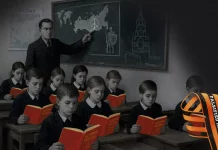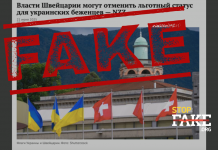A few weeks ago, The Policy Institute and the Centre for the Study of Media, Communication and Power at King’s College in London, published a report about how the Kremlin’s media machine manipulates the news in an effort to capture elite thinking. The report, entitled Weaponising news: RT, Sputnik and targeted disinformation is written by Dr. Gordon Ramsay and Dr. Sam Robertshaw, is available online and includes a case study of Ukrainian news that was done together with Texty.org.ua, an agency that focuses on data based journalism.
Ramsay and Robertshaw found that Russian media have three go to instruments to capture your thinking: they “flood the zone”, meaning that they literally flood the information sphere with “alternative facts” and “contradictory narratives” like what happened after the 2018 nerve agent attack on Sergei Skripal and his daughter in Salisbury by two members of Russia’s military intelligence, the GRU.
RT and Sputnik published 138 separate and contradictory narratives about the Skripal poisoning in 735 articles in the four weeks following the incident, incorporating the views of a “parallel commentariat” and amplifying Russian government sources.
The second tool is called “projecting Russian strength”: articles are pushed by RT and Sputnik that allege “western military weakness” alongside “Russian military strength”, which Ramsay and Robertshaw called “Heads we win, tails you lose.”
The third and final tool is: “Division and dysfunction”, these are narratives that highlight political and institutional failures, exacerbate and create social divisions and very often highlight the threat of immigration. Using a forensic approach to their study, the authors discovered that news organizations in the UK republish content from RT and Sputnik and then conveniently, the Kremlin media again republish the same content. There’s a good chance that the Russian media that you consume in English, is most likely from the Kremlin’s factory of lies.
Weaponising news: RT, Sputnik and targeted disinformation is the first comprehensive study of how RT and Sputnik sow confusion and division in the UK and beyond. It is based on an analysis of nearly 12,000 articles published in English by the two outlets and over 150,000 online articles by UK news outlets. The articles were collected between May and June 2017, and in March 2018, in the immediate aftermath of the Skripal poisoning.





